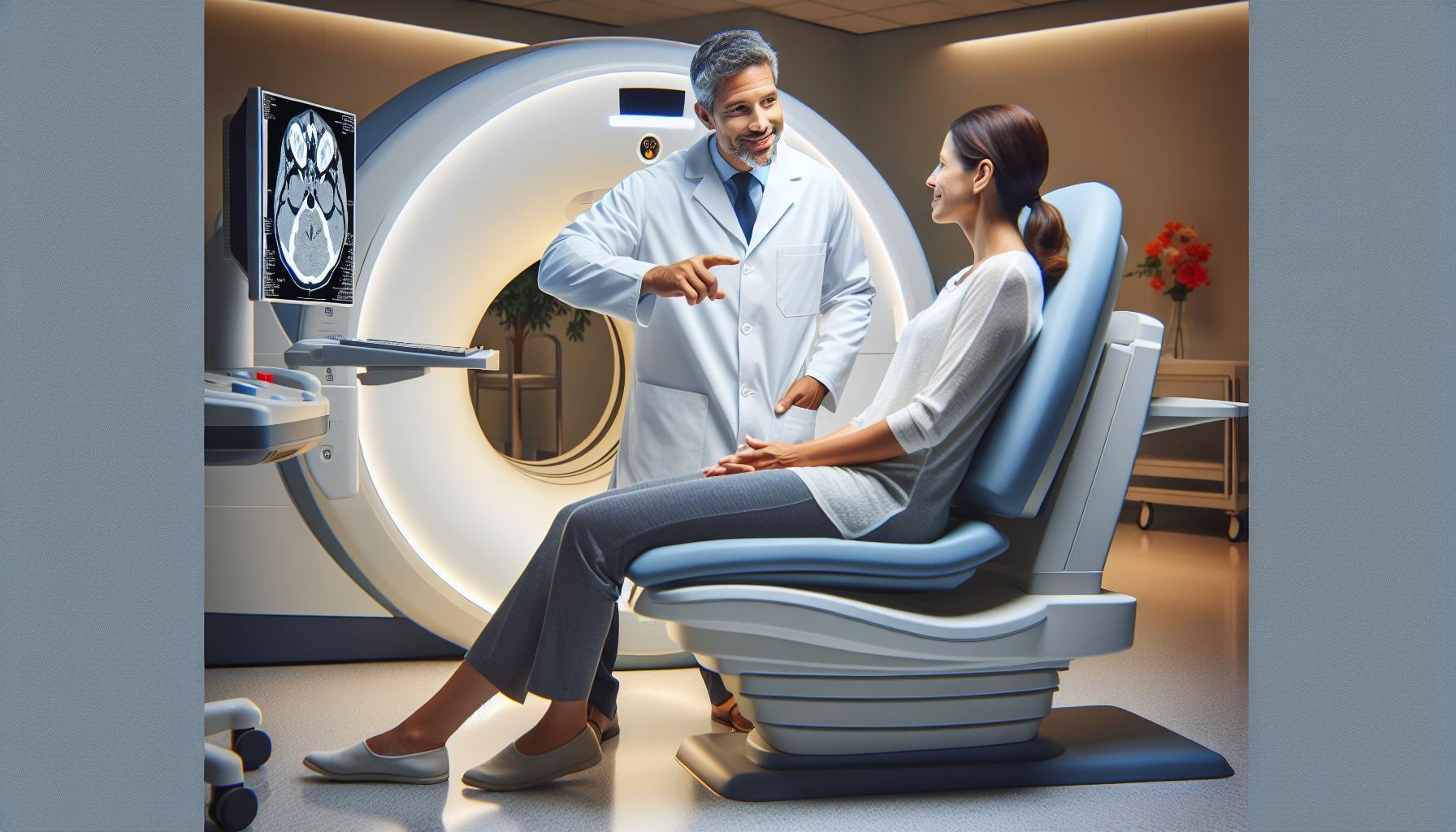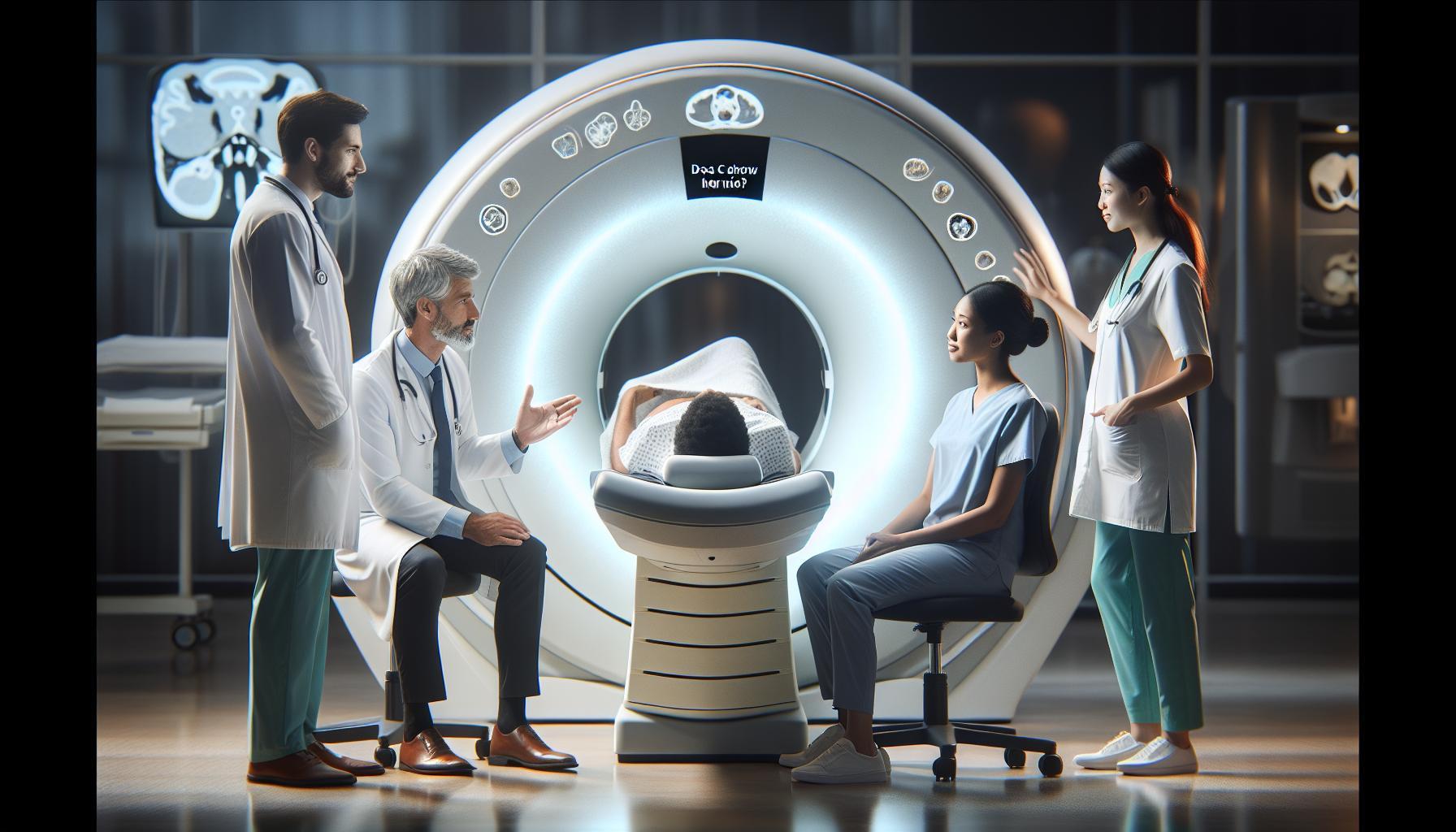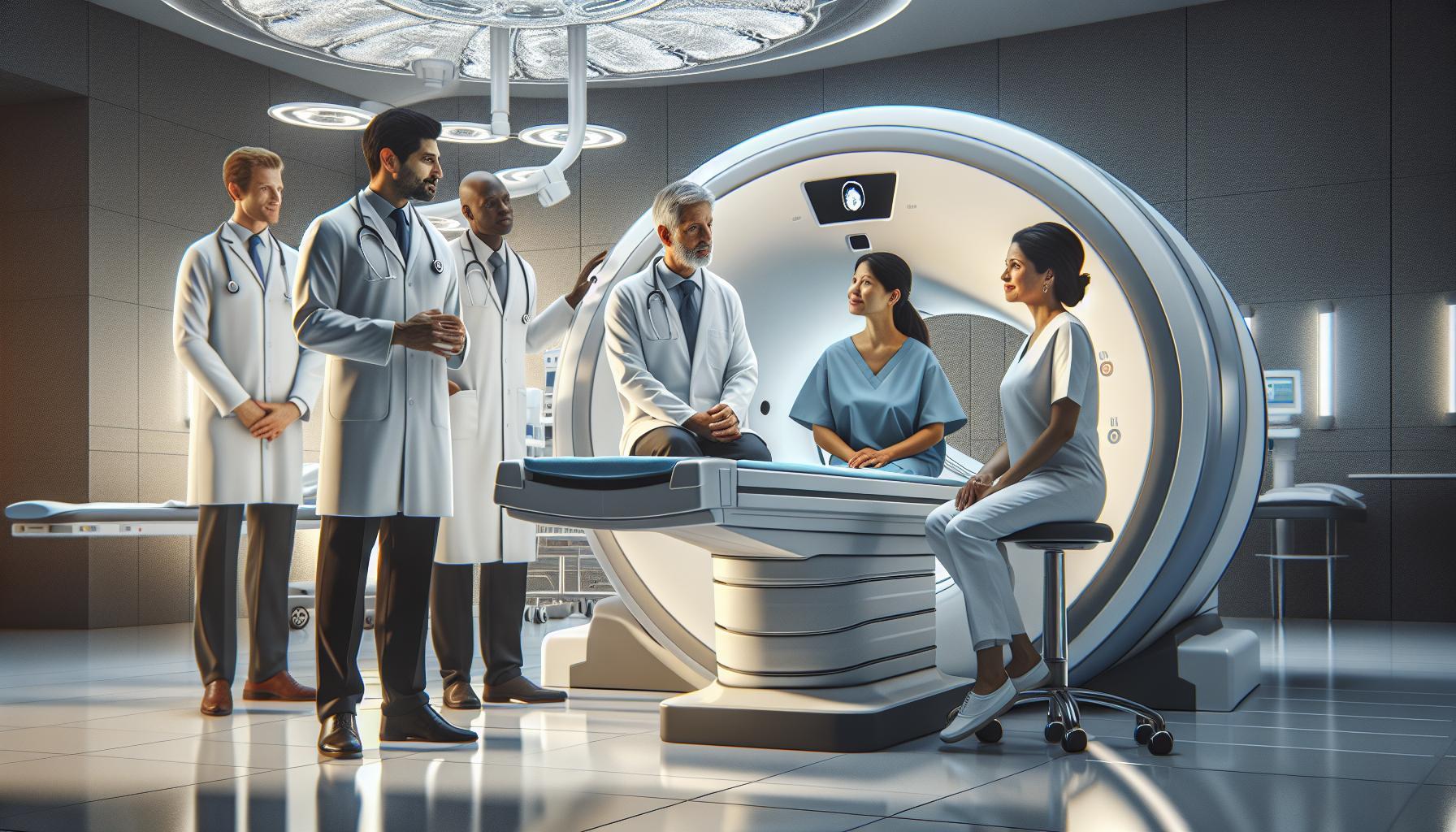Sinus issues can significantly impact your quality of life, often causing discomfort, pressure, and persistent nasal congestion. A sinus CT scan serves as a powerful diagnostic tool, revealing detailed images of your sinuses and nasal structures to uncover underlying conditions like infections, blockages, or anatomical abnormalities. Understanding what a sinus CT shows can empower you to make informed decisions about your health and treatment options.
If you’ve been struggling with recurrent sinus problems, knowing what to expect from this imaging procedure can ease your anxiety. As you read on, you’ll find valuable insights into the preparation, process, and potential findings of a sinus CT scan, guiding you toward a clearer understanding of your symptoms and the path to relief. Don’t let sinus issues hold you back; let’s explore what a sinus CT can reveal for your health journey.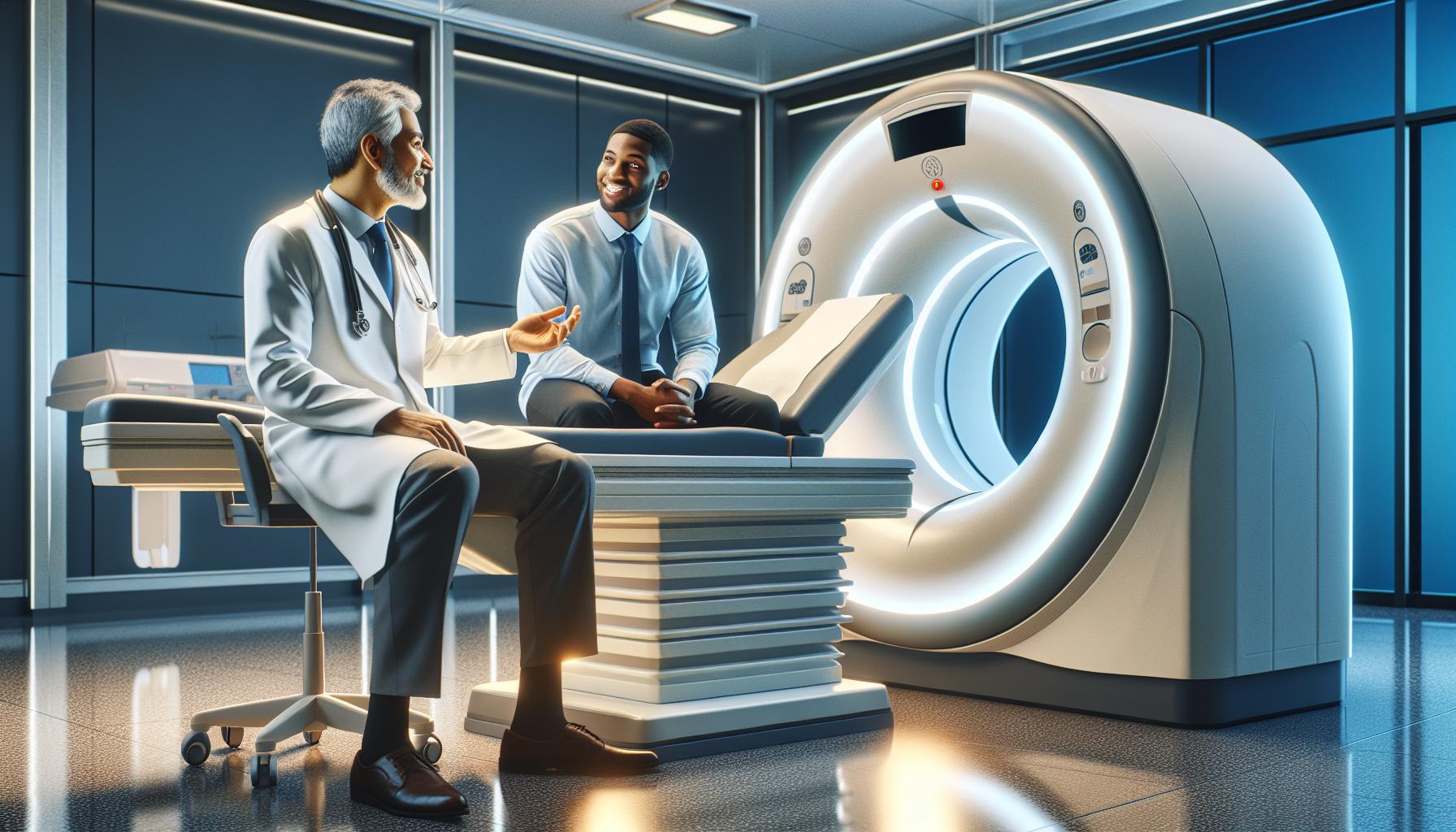
What is a Sinus CT Scan? Understanding the Basics
A sinus CT scan offers a detailed view of the sinus cavities, providing crucial information for diagnosing various nasal and sinus conditions. This advanced imaging technique employs X-ray technology to create cross-sectional images of the sinuses, allowing healthcare professionals to observe not just the bone structure, but also the soft tissues of the nasal passages and sinuses. Individuals experiencing recurrent sinus infections, chronic sinusitis, or unexplained nasal symptoms often benefit from this procedure, which can reveal underlying issues that standard X-rays may miss.
When preparing for a sinus CT scan, it is essential to follow guidelines from your healthcare provider. Commonly, patients are advised to remove any metal objects such as jewelry or glasses that could interfere with the imaging process. Unlike traditional CT scans, sinus CT scans often do not require the use of contrast material, but this can vary based on the specific condition being investigated. Since the procedure is quick, typically lasting only about 10-30 minutes, pre-scan anxiety can often be alleviated by understanding the steps involved.
During the CT scan, you will lie on a table that slides into the imaging machine. You may be asked to hold your breath for a few moments while the images are captured. With advancements in technology, many modern CT machines can reduce radiation exposure while still providing high-quality images, making this procedure safe for most patients. Following the scan, results are usually interpreted by a radiologist, who will provide your doctor with a detailed report to assist in deciding the next steps for treatment.
For those wondering about the benefits of a sinus CT scan, it plays a vital role in pinpointing conditions such as sinus infections, polyps, or anatomical anomalies that could contribute to sinus-related issues. Being informed about what to expect can ease feelings of apprehension, paving the way for effective diagnosis and treatment. Always consult your doctor for personalized advice regarding the necessity and implications of undergoing a sinus CT scan, ensuring you make well-informed decisions about your health care.
How Sinus CT Scans Detect Nasal Conditions
A sinus CT scan serves as a vital tool for uncovering various nasal and sinus conditions, offering a level of detail that standard imaging methods may not achieve. By utilizing advanced X-ray technology, this procedure generates cross-sectional images that capture not only the structural architecture of the sinuses but also the soft tissues and potential abnormalities that can lead to discomfort or health issues. For patients suffering from persistent sinus problems, the insights gained from a CT scan can illuminate possible causes, aiding healthcare professionals in formulating effective treatment strategies.
When a sinus CT scan is performed, the images produced provide a comprehensive view of potential obstructions, such as polyps or masses, and can reveal signs of inflammation characteristic of sinusitis. This is particularly important for individuals who have chronic sinus issues or those who experience recurring infections, as it allows for a precise determination of the underlying factors contributing to their symptoms. Often, the scan can identify anatomical variations within the sinus cavities that might predispose a person to chronic issues, guiding the healthcare provider’s decisions regarding intervention or surgery if necessary.
Moreover, the ability of a sinus CT scan to visualize the sinuses in three dimensions can significantly improve diagnostic accuracy. This enhanced perspective allows doctors to assess the extent of any blockages or infections, which can be pivotal in planning treatment approaches tailored to the patient’s specific anatomy and symptomatology. Engaging in this diagnostic process not only eases the path to effective treatment but also empowers patients with a clearer understanding of their health conditions. It’s essential for patients to discuss the results of their scans with their healthcare providers to know precisely what their images reveal and the next steps for managing their nasal health effectively.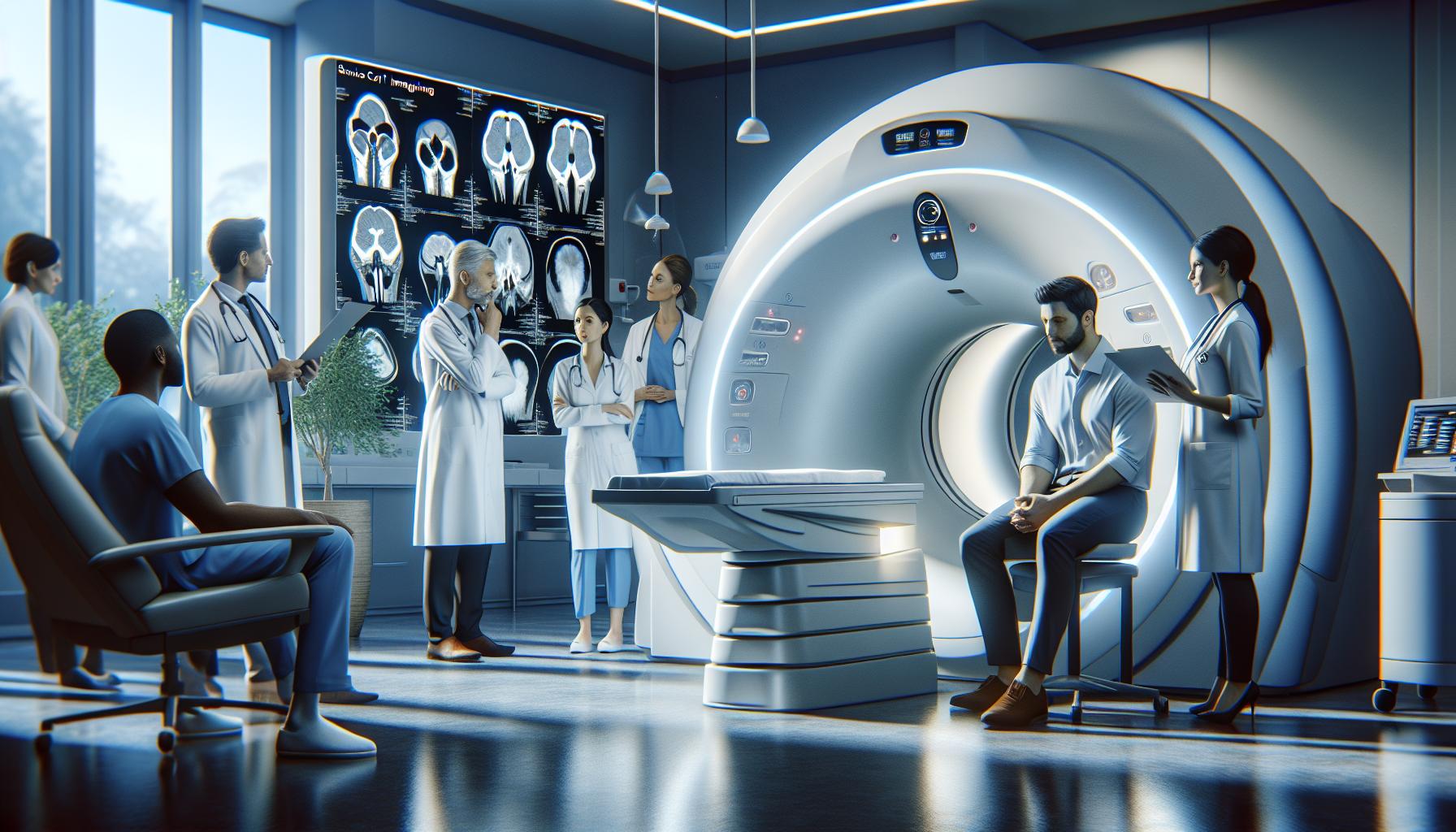
Common Conditions Revealed by Sinus CT Imaging
When it comes to diagnosing nasal and sinus conditions, sinus CT imaging stands out due to its precision and ability to reveal intricate details that other imaging methods might miss. Understanding the common conditions identified through a sinus CT scan can significantly help patients anticipate potential health issues and collaborate effectively with their medical providers.
One of the most prevalent conditions that sinus CT scans can uncover is chronic sinusitis. This condition is characterized by persistent inflammation of the sinus cavities, often leading to symptoms such as nasal congestion, facial pain, and headaches. By visualizing the extent of inflammation and any requisite obstructions, a CT scan allows doctors to assess the severity of sinusitis and tailor treatment options accordingly. The imaging can also illuminate the presence of nasal polyps, which are noncancerous growths emerging from the sinuses due to chronic inflammation. These can obstruct airflow and drainage, exacerbating sinusitis symptoms.
Additionally, a sinus CT can reveal sinus infections (acute sinusitis), indicating when bacterial or viral infections lead to swelling and blockage. It can distinguish between various types of sinus infections, guiding appropriate management strategies. Other conditions that might be identified include anatomical variations such as a deviated septum, which can hinder sinus drainage and contribute to repeated infections.
Understanding these conditions can provide reassurance. Knowing that sinus imaging can pinpoint the precise issues allows for more targeted treatments, reducing uncertainty and anxiety about the underlying causes of nasal and sinus discomfort. It’s always essential to discuss the results and subsequent steps with your healthcare provider, ensuring you receive personalized care based on the detailed insights offered by the CT scan.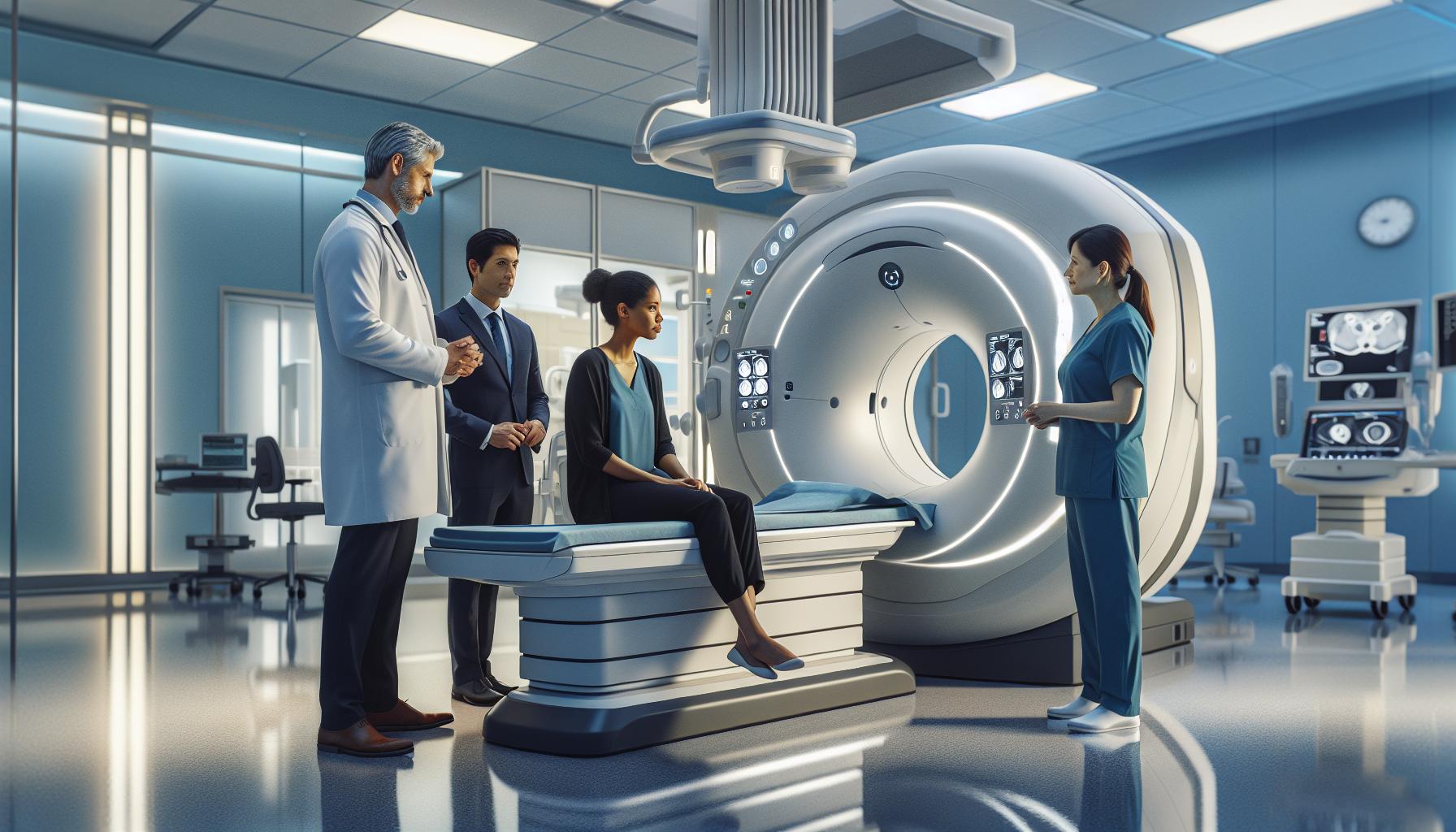
Preparing for Your Sinus CT Scan: A Step-by-Step Guide
Preparing for a sinus CT scan may seem daunting, but knowing what to expect can significantly ease any anxiety. This imaging process is pivotal in accurately diagnosing nasal and sinus conditions, and thorough preparation can enhance the quality of the scan and ensure your comfort throughout. Here’s a straightforward guide to get you ready for your appointment.
Before the Scan
To prepare effectively, you’ll want to follow these simple steps:
- Consult Your Healthcare Provider: Discuss any medications you’re currently taking, as some may need to be paused before the exam. Always mention if you’re pregnant or might be.
- Check for Allergies: Inform the technician if you have any allergies, particularly to contrast materials, iodine, or latex, which are sometimes used during imaging procedures.
- Avoid Food and Drink: Follow your doctor’s instructions regarding fasting. In most cases, you may be asked to avoid eating or drinking for a few hours prior to the scan to minimize stomach contents. This is especially important if a contrast agent will be used.
- Dress Comfortably: Wear loose-fitting clothing without metal zippers or buttons. You might need to change into a gown if your clothes have any metallic components that could interfere with the imaging.
Day of the Scan
On the day of your CT scan, it’s important to arrive early so you can fill out any necessary paperwork and have a chance to relax before the procedure.
- Arrive with Time to Spare: Aim to arrive at least 15-30 minutes early. This allows you plenty of time to check in and ask any last-minute questions.
- Communicate with the Staff: Don’t hesitate to express any concerns or fears you may have to the technician. They are there to help and can explain the process to you in detail.
- Stay Calm: While in the scanning room, you will lie down on a narrow table that slides into the CT machine. A staff member will guide you through what to expect as they take the images. Staying still is crucial for getting clear images, but they’ll let you know when you can breathe normally.
Being prepared helps you feel more in control and less anxious as you undergo the procedure. Remember, this imaging is vital for accurately diagnosing conditions like chronic sinusitis and nasal polyps, and understanding these details makes the preparation worthwhile. Your healthcare team is your ally, so keep them informed and don’t hesitate to ask questions to ensure a smooth experience.
What to Expect During a Sinus CT Procedure
During a sinus CT procedure, the experience is designed to be straightforward and efficient, allowing for quick yet detailed imaging of your nasal and sinus cavities. Upon arrival at the imaging center, you’ll check in and may be asked to fill out some paperwork. Once settled, a member of the radiology team will accompany you to the scanning room, where you can expect a calm and organized atmosphere.
Once you’re in the scanning room, you will be instructed to lie on a narrow table that moves into the CT scanner, which resembles a large doughnut-shaped machine. It’s normal to feel a bit apprehensive at this stage, but remember that the procedure typically lasts only a few minutes. As you lie still, the machine will capture a series of detailed images of your sinuses; it’s important to remain still during this period to avoid blurry results. You’ll be informed when you can breathe normally again between scans, and staff members will be nearby to guide you throughout the process.
Expected experiences during the scan include the sounds of the machine working, which can be somewhat loud. However, don’t be worried, as the noise is part of its normal function. If contrast dye is used, you may feel a warm sensation, but this is temporary and generally non-discomforting. Understanding what to expect can significantly ease anxiety and help in achieving high-quality images essential for accurate diagnosis. Always feel free to ask the staff any questions or express concerns; they are there to support you every step of the way.
Safety and Risks of Sinus CT Scans Explained
Undergoing a sinus CT scan can be a pivotal step in diagnosing nasal and sinus conditions, but it’s natural to have concerns about the safety and potential risks associated with the procedure. A crucial aspect to consider is the radiation exposure from CT imaging. While CT scans do involve higher doses of radiation compared to traditional X-rays, the amount is generally considered safe and necessary for accurate diagnosis when weighed against the benefits. Medical professionals strive to minimize exposure by adhering to strict guidelines, ensuring that scans are performed only when needed.
Another consideration is the use of contrast materials in some CT scans. While these agents enhance the quality of images, they can occasionally provoke allergic reactions. Most reactions are mild, resulting in symptoms such as itching or hives, but it’s important to inform your healthcare provider about any known allergies or previous reactions to contrast materials. Additionally, patients with kidney issues should discuss their history with their physician, as contrast dye can affect renal function in susceptible individuals.
Patient Comfort and Mental Preparedness
It’s equally crucial to address the psychological impact of medical imaging. The prospect of undergoing a CT scan may evoke anxiety or fear. Understanding the procedure and what to expect can alleviate these feelings and empower you as a patient. Engage openly with your healthcare team; they can provide reassurance and information tailored to your specific needs. Consider bringing a recording device or a friend for support during the visit, which can help in retaining information about the scan and easing any apprehension.
Ultimately, while safety measures are in place to minimize risks, open communication with your healthcare provider about your concerns and medical history can enhance your experience and ensure a thorough and safe examination. Always remember that the insights gained from a sinus CT scan play a vital role in guiding treatment and improving your overall health.
Interpreting Your Sinus CT Results: What to Know
Understanding how to interpret the results of your sinus CT scan can greatly enhance your confidence and engagement in your healthcare journey. A sinus CT scan provides detailed images of your nasal passages and sinuses, helping to uncover various underlying conditions. As you receive your results, remember that these images can reveal significant information about conditions such as sinusitis, polyp formation, and even anatomical issues within your nasal structure.
When your scan shows areas of inflammation or fluid build-up, this might indicate sinusitis-an infection that causes the sinuses to swell. If polyps are present, they may appear as soft tissue masses within your nasal passages, often requiring further evaluation to determine treatment options. Additionally, the CT scan can reveal structural abnormalities, such as a deviated septum, which may contribute to chronic sinus issues.
Working with Your Healthcare Provider
It’s essential to communicate with your healthcare provider about your CT results. Ask them to explain what specific findings mean for your health and the potential next steps. A clear understanding of your results may involve discussing treatment options, lifestyle changes, or whether further tests are necessary. Remember, your healthcare team is there to answer your questions and ease any concerns.
Emotional Preparedness
Receiving medical results can be an emotional experience. It’s normal to feel anxious about what these findings may imply for your health. Establishing a supportive dialogue with your physician can provide clarity and reassurance. If you’re uncertain about anything, don’t hesitate to ask for more information or express your worries regarding the implications of your results. This proactive engagement can make a positive difference in your overall experience and understanding of your condition.
Interpreting the findings of a sinus CT scan is not just about identifying specific issues; it’s also a step toward managing your health proactively. With the right information and support, you can navigate your treatment plan with confidence, ensuring you are well-equipped to take control of your health. Always remember to rely on professional medical guidance tailored to your unique situation.
Follow-Up Care: Next Steps After Your Sinus CT
Understanding what comes next after your sinus CT scan is crucial to managing your health effectively. Once you receive your results, your healthcare provider will typically discuss the findings with you, explaining what has been detected and how it relates to your symptoms. This step is vital, as a CT scan can uncover various conditions such as sinusitis, the presence of polyps, or structural issues in the nasal passages. Having this information allows for a more targeted approach to your treatment, if necessary.
It’s recommended to consider preparing a list of questions to ask your doctor after your CT scan. This could include inquiries about the implications of your results and potential treatment options. You might ask about lifestyle changes, medication management, or whether further tests are needed to clarify any findings. Engaging in a dialogue with your healthcare provider can ease anxiety and provide clarity, enhancing your understanding of the next steps in your health journey.
Following the discussion of your results, your provider may outline a treatment plan. This plan can range from medication, such as corticosteroids or antibiotics, for conditions like sinusitis, to recommendations for lifestyle modifications-such as using saline nasal sprays or practicing regular nasal irrigation to alleviate symptoms and prevent future issues. In some cases, if anatomical abnormalities are detected, referral to a specialist, such as an ear, nose, and throat (ENT) physician, might be warranted for further evaluation or surgical options.
Remember, the pathway after your CT scan is an opportunity to take an active role in your health management. By staying informed, communicating with your healthcare team, and following through with prescribed treatments or additional evaluations, you can empower yourself to address any sinus or nasal issues effectively. Keep in mind that your healthcare providers are there to support you, so don’t hesitate to reach out with any concerns or questions that arise during this process.
Comparing Sinus CT with Other Imaging Techniques
When considering the evaluation of nasal conditions, it’s essential to understand the various imaging techniques available and how they differ in their applications. Among these, sinus CT scans are specifically designed to provide detailed insights into sinus anatomy and pathology, making them particularly effective for diagnosing issues like sinusitis, polyps, and even tumors. However, other imaging modalities such as X-rays, MRIs, and ultrasound also play important roles in the overall diagnostic process.
Understanding Other Imaging Techniques
X-rays are often the first-line imaging tool for evaluating structural abnormalities within the sinus cavities. They are quick and widely available but offer a limited view. X-rays can sometimes miss subtle conditions and provide less detailed information about the soft tissues within the sinuses compared to more advanced imaging.
MRI scans are a powerful alternative when a detailed view of soft tissues is required. They are excellent at visualizing potential complications from sinusitis, such as orbital or brain involvement, and are particularly useful when the presence of tumors is suspected. However, MRIs are generally more time-consuming and less accessible in acute settings compared to CT scans.
Ultrasound, while less common for sinus evaluation, can be employed in specific situations, particularly for guiding procedures like biopsies. It’s non-invasive and does not involve radiation, making it a safe option for some patients, though its use is limited by the operator’s skill and the patient’s anatomy.
Advantages of Sinus CT Scans
Sinus CT scans stand out for their ability to provide rapid, high-resolution images of the sinus cavities and surrounding structures. They effectively reveal both bony anatomy and soft tissue conditions, allowing for precise assessment of complex pathologies. The three-dimensional nature of CT imaging also helps in planning potential surgical interventions, should they be necessary.
For patients experiencing persistent sinus issues likely linked to anatomical factors, such as nasal polyps or structural deformities, a sinus CT scan often becomes a vital part of the diagnostic pathway. The detailed insights provided can guide healthcare providers in tailoring treatment plans effectively, which is essential for improving quality of life and reducing recurrent episodes.
In conclusion, while sinus CT scans are a powerful tool for diagnosing nasal conditions, understanding the roles and limitations of other imaging techniques can empower patients to engage in informed discussions with their healthcare providers. This collaborative approach not only alleviates anxiety but also ensures that the most appropriate diagnostic pathway is chosen for individual medical needs. Always consult with a healthcare professional for personalized advice and tailored treatment options based on your specific circumstances.
Understanding Costs: Is a Sinus CT Worth It?
The decision to undergo a sinus CT scan can often feel overwhelming, especially when considering the associated costs. Many patients wonder whether the potential benefits of detailed imaging justify the expense. It’s important to remember that a sinus CT scan can provide critical insights that might save you both time and money in the long run by avoiding unnecessary treatments and inappropriate diagnostic pathways.
Costs for a sinus CT scan can vary significantly based on factors such as location, facility, and whether you have health insurance. On average, prices for the procedure may range from $300 to $1,000. To navigate these expenses effectively, patients should first check with their insurance providers to determine coverage specifics, as some policies may require pre-authorization or have particular networks that offer reduced rates.
Assessing Value Beyond Price
While the upfront costs of a sinus CT scan can be significant, consider the longer-term benefits. For individuals experiencing chronic sinus problems, this scan can reveal underlying conditions such as sinusitis, nasal polyps, or structural abnormalities that could require medical or surgical intervention. By accurately diagnosing these issues, you can help ensure that any treatment plan is tailored effectively, potentially leading to improved health outcomes and reduced overall medical costs in the future.
Moreover, a thorough understanding of your sinus condition can alleviate the anxiety associated with uncertainty and recurring symptoms. Patients often report a sense of relief and empowerment once they have definitive answers about their health, leading to more informed discussions with their healthcare providers about the best next steps.
In conversations with your doctor, be open about your financial concerns. Together, you can explore the necessity of the scan, possible alternatives, and any available programs that may help offset costs. Ultimately, considering both the financial and health implications will help you make a decision that aligns with your personal needs and circumstances.
Patient Experiences: Real Stories from Sinus CT Patients
Many individuals fear the unknown when it comes to medical procedures, and a sinus CT scan can be intimidating. However, understanding how others have navigated the experience can provide comfort and context. For instance, Maria, a 35-year-old woman who had been struggling with chronic sinusitis, shared her journey. After dealing with persistent headaches and nasal congestion that over-the-counter remedies couldn’t alleviate, her doctor recommended a sinus CT scan. Maria found that the process was straightforward and less stressful than she had imagined. The staff walked her through each step, from preparation to the procedure itself, and reassured her that the scan would only take a few minutes.
Similarly, John, a 42-year-old male who had a history of nasal polyps, described receiving valuable insights from his CT results. The imaging revealed the size and location of the polyps, allowing his ENT specialist to formulate a targeted treatment plan. “Knowing exactly what was going on gave me peace of mind,” John noted. He emphasized how the detailed images not only guided his treatment but also empowered him to ask informed questions during follow-up appointments. Many patients report that the clarity provided by a sinus CT scan helps them feel more in control of their health decisions.
Moreover, patients often express relief at the transparency of findings. Emily, a college student, detailed her experience, stating that discussing her CT results with her doctor turned into a collaborative dialogue. The doctor explained what specific signs were visible on the scan, such as inflammation and potential obstructions, which alleviated Emily’s concerns about unanswered symptoms. This level of engagement can be essential for easing anxiety, ensuring that patients grasp their conditions, and allowing them to actively participate in their own healthcare management.
Overall, the experiences shared by patients highlight the importance of communication, empathy, and support from healthcare providers throughout the sinus CT process. Those preparing for a sinus CT scan can take comfort in knowing that many have found the procedure manageable, and the results invaluable for their treatment pathways. Remember to reach out to your healthcare professional with any questions or concerns prior to your scan; being informed is a powerful tool in navigating healthcare experiences confidently.
Consulting Your Doctor: When to Consider a Sinus CT Scan
Recognizing when to consult a doctor about a sinus CT scan can be pivotal in addressing ongoing nasal issues. If you’re experiencing persistent symptoms such as nasal congestion that lasts longer than 10 days, severe headache, facial pain or pressure, or if over-the-counter medications have failed to provide relief, it’s time to speak with your healthcare provider. These symptoms can indicate conditions that a sinus CT can illuminate, helping to establish a clearer diagnosis.
During your consultation, be open about your symptoms and medical history. For instance, if you have previously been diagnosed with chronic sinusitis or suspect you have sinus polyps, mention these details. CT scans are particularly valuable for visualizing complex sinus anatomy and identifying obstructions or abnormalities, such as thickened sinus linings or fluid accumulation, which may not be discernible through other diagnostic methods like X-rays.
When discussing potential imaging, ask targeted questions about what the CT scan can reveal about your condition or the next steps in your treatment plan. Examples of inquiries might include:
- What specific issues can a sinus CT scan help identify in my case?
- How will the results influence my management options?
- Are there any alternative imaging methods we should consider?
The goal is to create a collaborative environment where you feel confident in understanding the necessity of the scan and how it aligns with your broader treatment objectives. Remember, engaging in dialogue with your doctor not only aids in clarifying your health concerns but also empowers you to be an active participant in your healthcare journey.
Q&A
Q: What symptoms indicate a need for a sinus CT scan?
A: Symptoms such as persistent nasal congestion, facial pain, reduced sense of smell, and recurrent sinus infections can indicate the need for a sinus CT scan. If these symptoms are severe or do not improve with treatment, consulting a healthcare professional is recommended.
Q: How does a sinus CT scan differ from a regular X-ray?
A: Unlike regular X-rays, a sinus CT scan provides detailed cross-sectional images of the sinuses, revealing soft tissue structures and fluid accumulations. This enhanced detail allows for better diagnosis of conditions like sinusitis, tumors, or anatomical abnormalities.
Q: How long does it take to get results from a sinus CT scan?
A: Typically, results from a sinus CT scan can be expected within 24 to 48 hours. After the scan, the physician will interpret the images and share the findings, often in a follow-up appointment.
Q: Can a sinus CT scan detect allergies?
A: A sinus CT scan does not directly diagnose allergies; however, it can identify inflammation in the sinuses that may be caused by allergic reactions. Further allergy testing may be required to pinpoint specific allergens.
Q: Is there any preparation needed before a sinus CT scan?
A: Generally, minimal preparation is required for a sinus CT scan. Patients should inform their doctor of any allergies, especially to contrast materials if used, and may need to avoid certain medications. It’s always best to follow the specific instructions provided by the healthcare facility.
Q: Are there risks associated with having a sinus CT scan?
A: The primary risk associated with a sinus CT scan is exposure to radiation. However, modern equipment minimizes this exposure, and the benefits of an accurate diagnosis usually outweigh the risks. Discuss any concerns with your healthcare provider.
Q: What conditions can a sinus CT scan identify?
A: A sinus CT scan can identify various conditions such as sinusitis, nasal polyps, tumors, and structural abnormalities like a deviated septum. The clarity of the images helps in accurate diagnosis and treatment planning.
Q: How should I interpret my sinus CT results?
A: Interpreting sinus CT results should be done by your physician, who can explain the findings in the context of your symptoms and medical history. It’s important to follow-up with your doctor to discuss any necessary next steps or treatments.
In Summary
Understanding what a sinus CT scan reveals about nasal and head conditions can empower you to address your symptoms more effectively. Whether you’re dealing with chronic sinusitis or looking for answers to ongoing discomfort, this imaging technique plays a crucial role in diagnosis and treatment planning. Don’t let uncertainty hold you back-consider scheduling a consultation with your healthcare provider today to discuss your sinus health.
For more information on sinusitis symptoms and treatment options, explore our articles on chronic sinusitis and effective nasal irrigation techniques. If you’re interested in the latest advancements in imaging or have questions about your upcoming CT scan, feel free to reach out or leave a comment below. Your journey to better sinus health starts here-take the next step and discover how these insights can improve your quality of life today!

